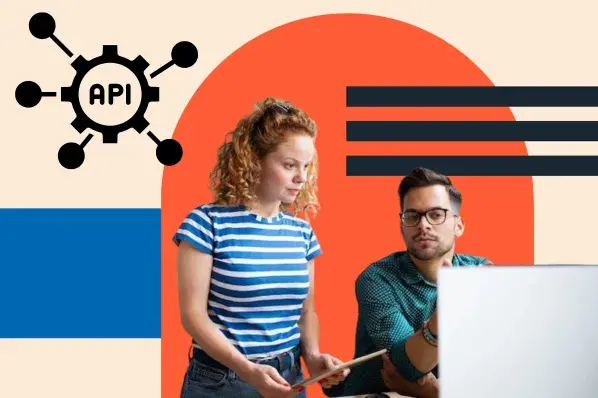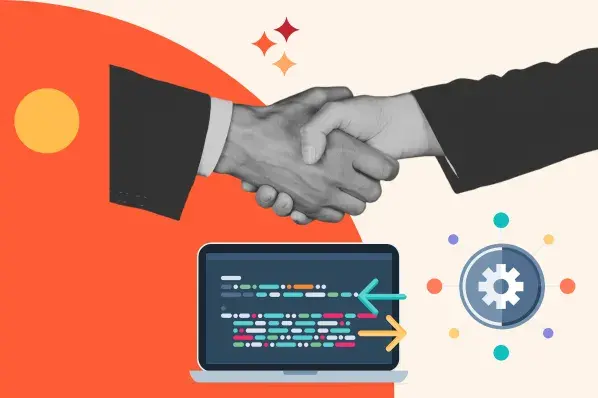This post will explore the differences between Webhooks and APIs, from how they work to when each should be used. By equipping yourself with comprehensive knowledge about these critical tools, you can ensure that your web apps are developed efficiently and effectively for maximum success.
Webhooks vs. APIs: What’s the Difference?
Webhooks and APIs as the two main tools web applications use to communicate with each other. Both webhooks and APIs work by sending data from one web application to another to process requests, provide access to resources, and send notifications.
A webhook is an event-based system that allows your application to send data to another application in response to certain events or triggers. The beauty of webhooks is that they allow for real-time communication and data transfer in response to an event.
For example, if a user signs up for your service, you can use webhooks to notify them with a welcome message or welcome email immediately.
An API (Application Programming Interface) is a set of protocols used by two different applications to communicate with each other. APIs provide developers with programmatic access to retrieve information from one application and use it in another application.
For example, you can use an API to access user data from another website and use it in your own application.
The primary difference between webhooks and APIs is that webhooks provide a one-way connection between two web applications, while APIs allow for two-way communication. When webhooks are triggered, they’ll send data from one web application to another, whereas APIs allow for communication in both directions.
Examples of Webhooks vs. APIs
Webhooks are used in various web applications, including e-commerce, social media, and customer engagement platforms. For instance, webhooks can send web notifications or emails when a customer adds a product to their shopping cart or follows your page on social media.
Companies that use webhooks include Twitter, Dropbox, Stripe, Slack, and Shopify.
APIs are also widely used in web applications such as payment processors, chatbots, and ride-sharing platforms. For instance, you can use an API to access customer information from a third party web application and use it in your own web application.
Companies that use APIs include Google Maps, Amazon Web Services (AWS), Instagram, and Facebook.
When to Use Webhooks vs. APIs
So, when should you use webhooks versus APIs? The answer depends on the type of web applications you’re developing and what type of data transfer is needed.
Webhooks are ideal if you need to send data from one web application to another in response to certain events. Webhooks allow for efficient and timely communication between web applications and make managing large volumes of data easier.
However, if you need two-way communication between web applications with programmatic access to web resources and data, APIs are the way to go. With APIs, you can easily access web resources from other web applications and use them in your own web application.
Which Should You Choose?
When deciding between webhooks and APIs, consider the type of web applications you are developing and what type of data transfer is needed. Webhooks provide a one-way connection between web applications, while APIs allow for two-way communication with programmatic access to web resources.
No matter which web application tools you choose, understanding webhooks and APIs will help you create web applications that provide users with a seamless, secure, and efficient experience.
By understanding webhooks vs. APIs and their differences, web developers can make an informed decision on how to approach web application development best.




![How to get a YouTube API key [tutorial + examples]](https://53.fs1.hubspotusercontent-na1.net/hubfs/53/%5BUse%20(1)-4.webp)
.webp)






